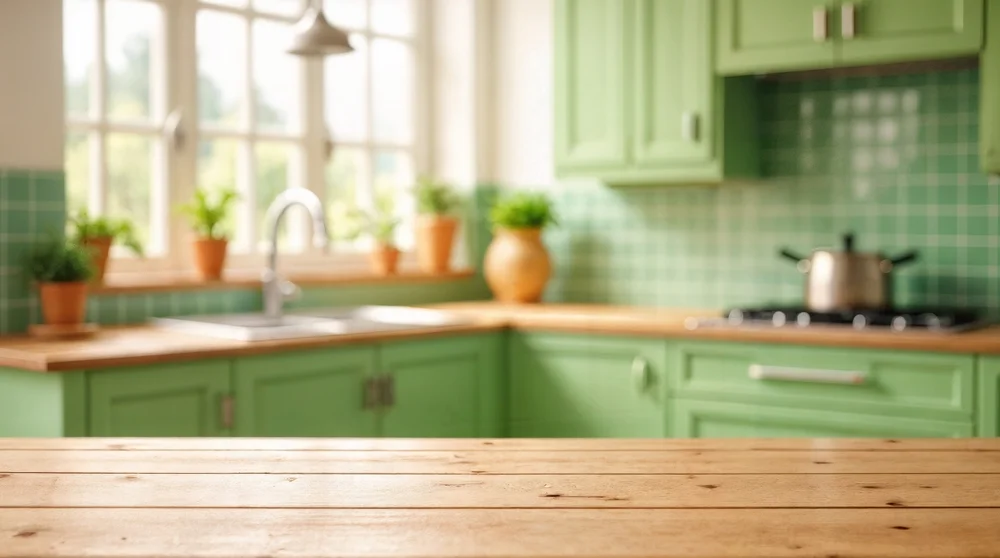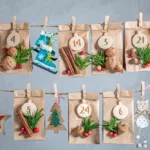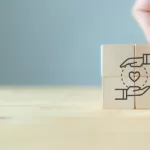Kitchen designers play a key role in the home improvement sector. With consumers seeking more flexible, affordable and personalised solutions, product offerings and marketing strategies need to adapt. This is particularly true in the context of a kitchen advertising campaign.
Today, standing out is no longer just about the showroom. You have to go where the prospects are, capture their attention online, and offer memorable experiences to spark engagement. This is where gamification comes into its own: by combining interactivity, rewards and immersion, it allows you to get to know your target audience better so you can address them more effectively and convert them more easily.
In this articles, we break down effective marketing levers for kitchen designers, focusing on the best gamified formats for generating traffic, leads, and conversions.
The marketing challenges facing kitchens manufacturers
With €4.23 billion spent (including VAT), the French kitchen market accounts for nearly 30% fo furniture spending. This dynamism can be explained by households refocusing their attention on their homes. The kitchen is becoming a living space in its own right, often opening onto the living room. It is therefore establishing itself as a central room in which French people are willing to invest.
This evolution is forcing kitchen designers to rethink their positioning. One the one hand, expectations are changing: consumers are looking for customised, sustainable, functional and attractive kitchens. On the other hand, the purchasing process no longer begins in-store, but online, with inspiration, configuration and comparison before an appointment is made.
In a highly competitive sector dominated by major brands (Cuisinella, Schimdt, Mobalpa), independent retailers are relying on distinctive digital strategies to stand out. According to Ameublement Français, 59% of households are planning to purchase equipment for their homes, including 37% for furniture. The challenge is to capture this demand through the right channels.
Mobile is also becoming a priority for kitchen designers. Players such as Oskab and IKEA are investing in optimised smartphone shopping experiences, without necessarily using apps. The web, social media and local in-store activation are now the three pillars of digital marketing that businesses need to master.
How to improve your digital marketing for a kitchen advertising campaign
In a market where competition is fierce and the purchasing process is complex, gamification is one of the most effective strategic levers for attracting, qualifying and converting consumers’ attention and strengthens their engagement throughout the conversion funnel. Here are five marketing campaign ideas to energise your communications and boost your sales performance.
1. Marketing gamification to attract new prospects
One of the main challenges for kitchen designers remains generating qualified leads who are ready to enter the sales funnel. Fun mechanics such as instant wins or competitions (which can be promoted by influencers) help to expand the audience and enrich the CRM database.
These formats, which can be easily deployed on social media or via a landing page, promote virality. They capture attention with a clear promise (gift voucher, discount) while collecting strategic information such as contact details, kitchen plans, desired completion data, etc.
Example: To celebrate its 35th anniversary, Cuisines Références launched a multi-channel competition. The objective was twofold: to recruit new leads and increase brand awareness. The result: more than 500 qualified prospects agreed to receive a follow-up phone call, and the campaign generated 5,000 clicks to the page dedicated to the anniversary offer.
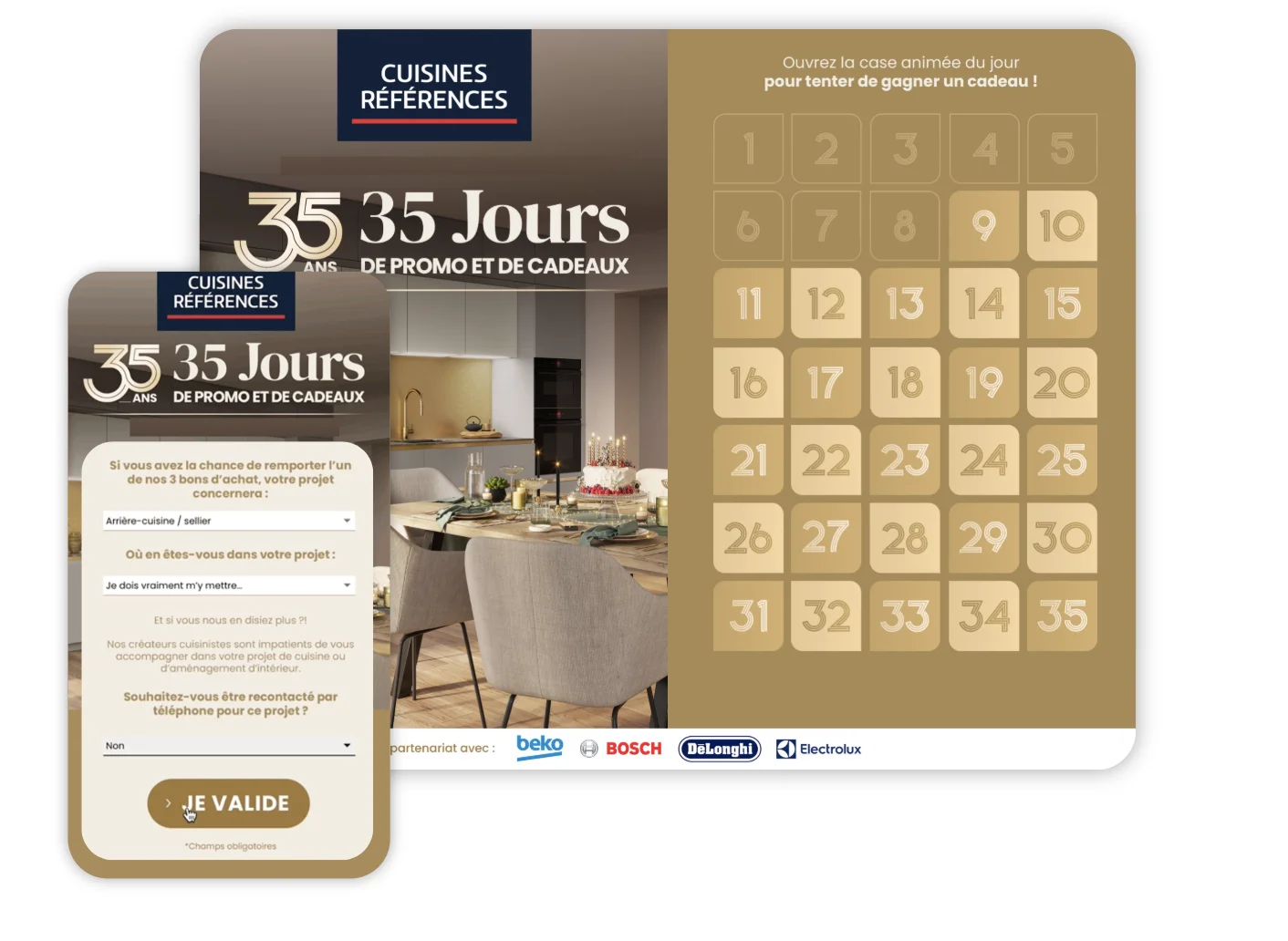
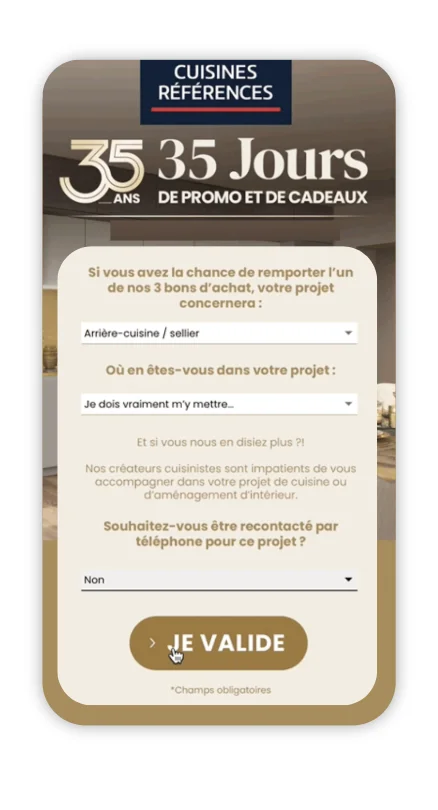
Best practices:
- limit the amount of information requested at the outset,
- activate a social relay with a referral mechanism,
- include a call to action to make an appointment or use a configurator.
2. Playable mechanics to qualify leads on a kitchen advertising campaign
Understanding projects’ expectations ahead of an appointment is essential in the kitchen industry. Careful qualification allows you to tailor your offering, provide a personalised experience and optimise the efforts of your sales teams. Gamification offers a powerful qualification tools for this purpose.
Formats such as quizzes, fun surveys and the Swiper product allow you to collect intentional data while strenghtening engagement. These mechanics transform traditional forms into more fluid and interactive experiences. In just a few clicks, users can specify their preferred style, the size of their kitchen or their estimated budget.
The result: comprehensive, accurate information collected without friction. This data feeds into the CRM to segment email campaigns or refine retargeting.
Best practices:
- ask between 3 and 5 questions maximum,
- offer personalised content at the end of the tour (choice of cuisine, meeting with an expert),
- provide a small incentive (voucher, free catalogue) to maximise completion rates.
3. Marketing games to boost conversion
Transforming engagement into commercial action is a key challenge for kitchen designers. A gamified campaign that is well integrated into the purchasing journey can accelerate decision-making, particularly during promotional periods.
Instant wins, for example, crate a sense of urgency around an offer. By incorporating a strategic reward (such as a discount coupon) into the game experience, retailers can increase their conversion rates.
Cuisines Plus is a perfect example of this lever. For its anniversary the brand launched a campaign offering numerous households appliances and a prize draw to win a €2,500 voucher. The result: more than 3,500 qualified prospect, 370 of whom wanted to be contacted by a sales representative. This performance demonstrates the effectiveness of a well-targeted, fun approach.
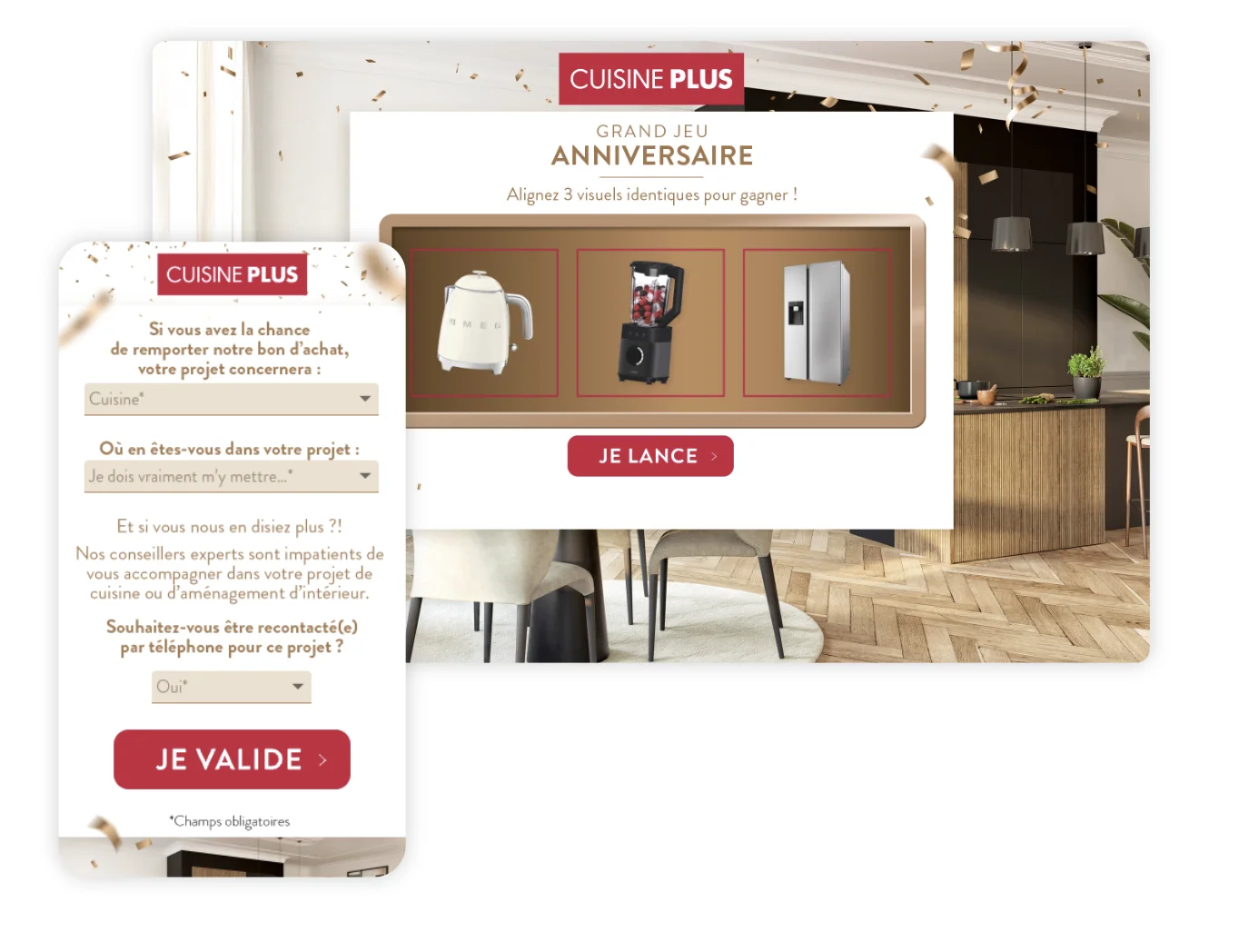
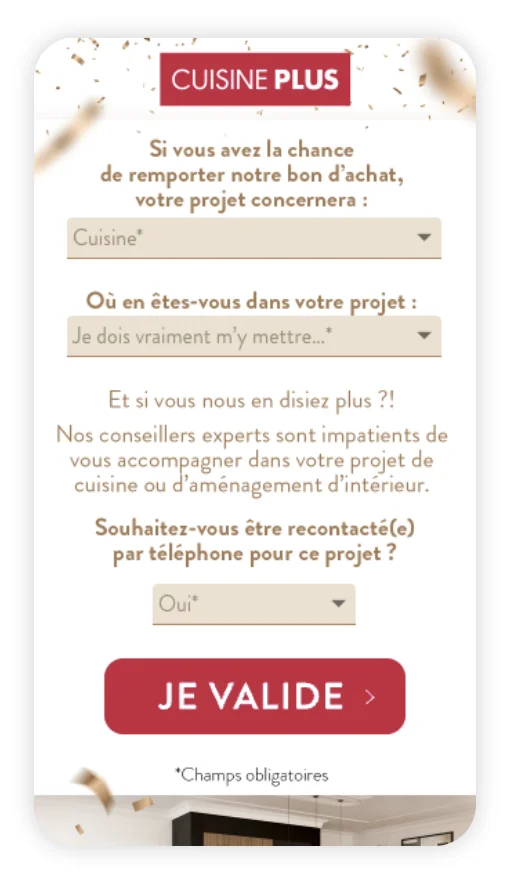
Best practices:
- integrate the game into a key moment in the commercial calendar (sales, brand anniversary, etc.)
- adapt allocations to target customer expectations
- streamline the experience between playful mechanics and initial contact. The game should not interrupt the conversion funnel, but rather opitmise it.
4. Playable Marketing to increase retention rates
Customer loyalty is a strategic challenge in the kitchen sector, where the purchasing cycle is long and infrequent. To maintain interest, reward existing customers and encourage repeat business (accessories, partial renovations, word of mouth), gamification can play a key role.
Playable Marketing transforms traditional loyalty programs into engaging experiences. The result: more interactions with the brand, better memorisation and a stronger sense of belonging.
Brands such as IKEA are already exploring this levers. The IKEA Family app incorporates interactive content and challenges related to interior design, strenghtening post-purchase engagement. These gamified approaches encourage customers to return to the store or website, while collecting useful behavioural data to personalise offers.
Best practices:
- offer genuinely useful incentives (vouchers, decorative accessories),
- limit friction in accessing the loyalty program
- regularly update the mechanics to prevent boredom.
5. Interactive animations for a kitchen advertising campaign at the point of sale
The showroom remains a key lever for kitchen designers. It is often the place where the project takes shape and becomes a reality. To enhance the appeal of retail outlets and increase the time spent in store, interactive activities can make all the difference. The aim is to transform a visit to the showroom into an interactive, memorable experience that generates conversions.
Gamification mechanics create a fun and unique moment of discovery. Touchscreen games, QR codes scattered throughout the store, and digital Wheel of Fortune energise customer experience. By increasing interactions with visitors, games make it easier to collect qualified leads in your CRM database and increase conversion rates. Some stores, such as But and Conforama, already use digital games in)store to celebrate key commercial events (birthdays, sales, openings).
Best practices:
- Install the terminal or digital game in a strategic area of the showroom.
- Offer a gift voucher to be redeemed at the chechout to encourage customers to make a purchase.
- Brief advisors on how to incorporate the game into the sales process.
Conclusion
Gamification is emerging as a powerful lever for addressing the marketing challenges of a kitchen advertising campaign. When intelligently integrated into an omnichannel customer journey, it transforms every interaction into a conversion opportunity. To boost your kitchen store’s advertising campaigns, all you need to do is customise Adictiz’s fun mechanics!


